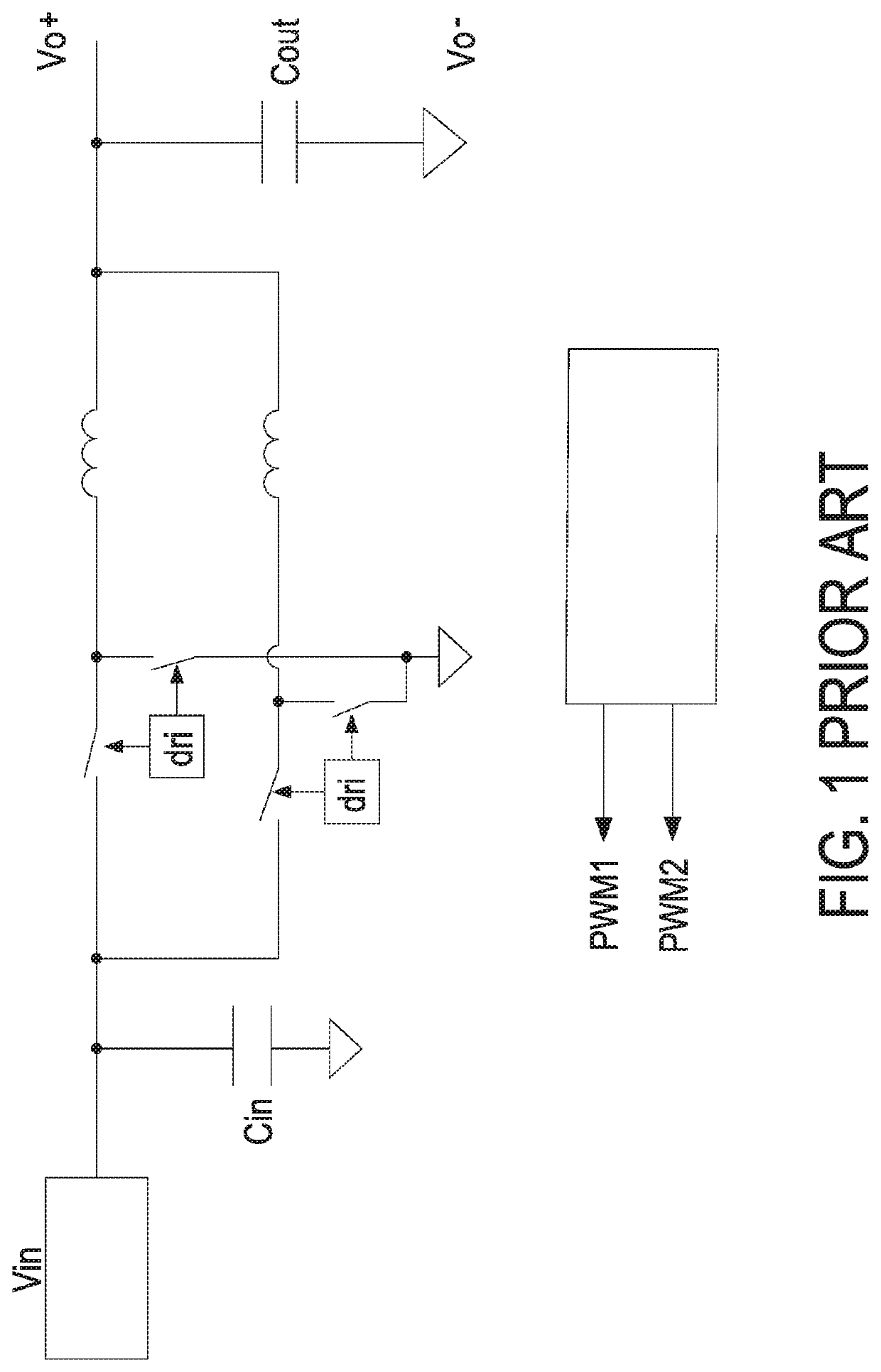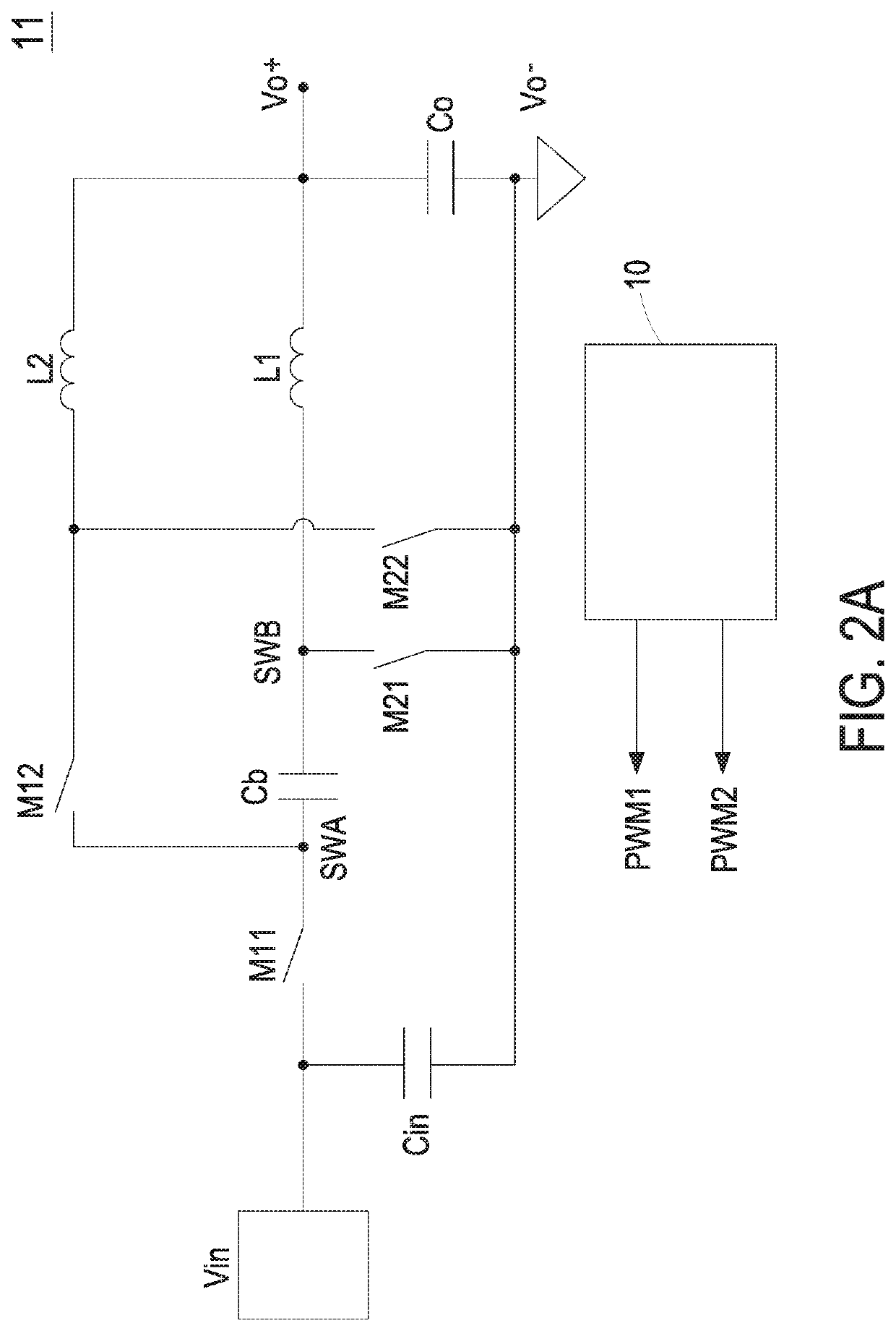Power conversion system
- Summary
- Abstract
- Description
- Claims
- Application Information
AI Technical Summary
Benefits of technology
Problems solved by technology
Method used
Image
Examples
first embodiment
[0060]In the first embodiment shown in FIG. 4A, N equals 2, and the power conversion circuit 11 includes two switching power conversion units and one storage device. The storage device is the capacitor Cb, and there are the first node SWA and the second node SWB at the two ends of the capacitor Cb respectively. The first switching power conversion unit includes a first switch M11, a second switch M21 and an inductor L1. The second switching power conversion unit includes a first switch M12, a second switch M22 and an inductor L2. Please refer to FIG. 3A and FIG. 3B, Ts is the switching period, and D is the duty ratio of the switching period. FIG. 3A and FIG. 3B shows the switch driving signals of the power conversion circuit 11 with D smaller than 50% and D larger than 50% respectively. The control sequences of the first switches M11 and M12 are 180 degrees out of phase with respect to each other. The driving signals of the first and second switches M11 and M21 are complementary to ...
second embodiment
[0062]In the second embodiment shown in FIG. 5A, N equals 2, the power conversion circuit 11 is similar to the power conversion circuit 11 of FIG. 2A and FIG. 4A, and the detailed description thereof is omitted herein. The turns ratio of the magnetic element T1 of the power circuit 22 to the winding T3 of the precharge circuit 32 is 2:1, and the winding T3 is positively coupled to the magnetic element T1. Please refer to the oscillogram shown in FIG. 5B. When the sixth switch S3 is turned on, the voltage VT1 on the magnetic element T1 equals Vin, the voltage on the winding T3 equals Vin / 2, and the third diode D3 is turned on. Therefore, the voltage VC3 on the third capacitor C3 equals Vin / 2. When the sixth switch S3 is turned off, the supply voltage Vcc is provided through the negative coupling between the winding T4 and the magnetic element T1. Meanwhile, the voltage VC3 on the third capacitor C3 charges the capacitor Cb through the third resistor R3 and the fourth resistor R4, whi...
third embodiment
[0071]In the third embodiment shown in FIG. 5C, N equals 2, and the second power conversion circuit 13 includes two switching power conversion units and two storage devices. The first switching power conversion unit includes a first switch S11, a second switch S22, a third switch SR1 and an inductor L1. The second switching power conversion unit includes a first switch S12, a second switch S21, a third switch SR2 and an inductor L2. The storage devices are the capacitors Cb10 and Cb11. There are the first node SWE and the second node SWF at two ends of the capacitor Cb10 respectively, and there are the first node SWG and the second node SWH at two ends of the capacitor Cb11 respectively. Please refer to FIG. 3C, where Ts is the switching period, and D is the duty ratio of the switching period. The first switch S11 and the second switch S22 are turned on and off simultaneously, and the first switch S12 and the second switch S21 are turned on and off simultaneously. The control sequen...
PUM
 Login to View More
Login to View More Abstract
Description
Claims
Application Information
 Login to View More
Login to View More - R&D
- Intellectual Property
- Life Sciences
- Materials
- Tech Scout
- Unparalleled Data Quality
- Higher Quality Content
- 60% Fewer Hallucinations
Browse by: Latest US Patents, China's latest patents, Technical Efficacy Thesaurus, Application Domain, Technology Topic, Popular Technical Reports.
© 2025 PatSnap. All rights reserved.Legal|Privacy policy|Modern Slavery Act Transparency Statement|Sitemap|About US| Contact US: help@patsnap.com



